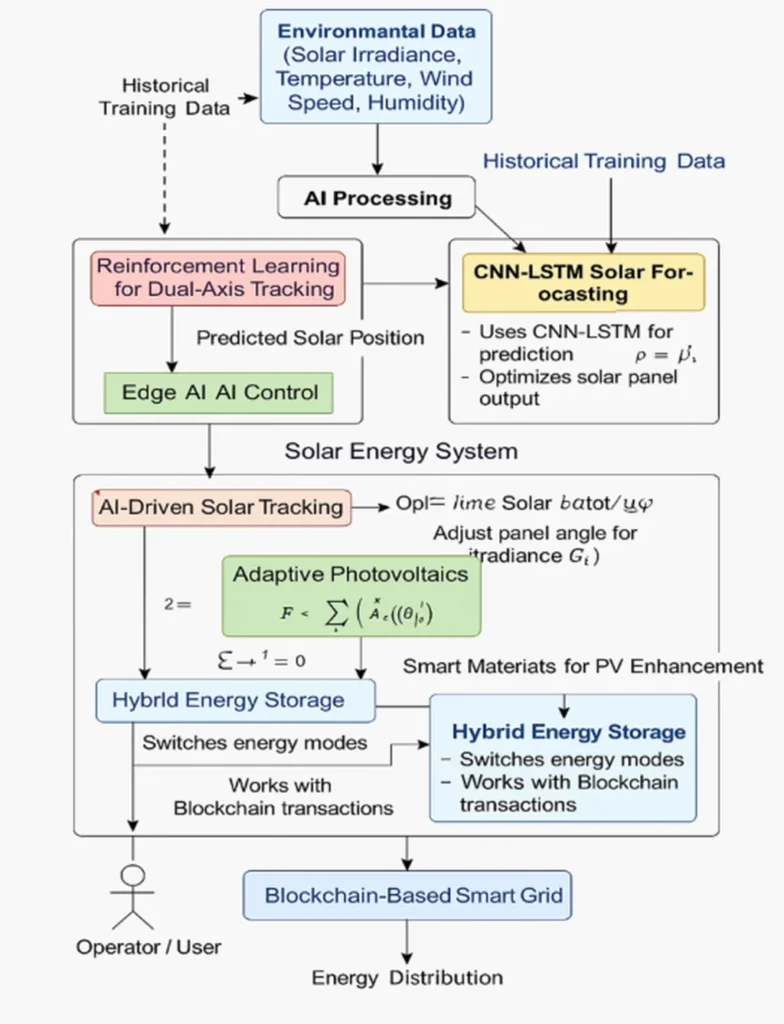In the pursuit of smart, zero-carbon cities, accurate solar power forecasting is a linchpin, and a recent study published in the journal *Buildings* (translated from the original title) has unveiled a promising advancement in this arena. Led by Haytham Elmousalami from the Department of Infrastructure Engineering at the University of Melbourne, the research introduces a hybrid AI model that could revolutionize how we predict and manage solar energy, offering significant commercial implications for the energy sector.
The study, titled “Enhancing Smart and Zero-Carbon Cities Through a Hybrid CNN-LSTM Algorithm for Sustainable AI-Driven Solar Power Forecasting (SAI-SPF),” evaluated state-of-the-art AI models using operational data from two of the world’s largest solar installations: the Benban Solar Park in Egypt and the Sakaka Solar Power Plant in Saudi Arabia. The hybrid Convolutional Neural Network–Long Short-Term Memory (CNN-LSTM) model emerged as a standout performer, achieving impressive metrics. For Benban, it recorded a Mean Absolute Percentage Error (MAPE) of 2.04%, Root Mean Square Error (RMSE) of 184, Mean Absolute Error (MAE) of 252, and an R² of 0.99. Similarly, for Sakaka, the model achieved an MAPE of 2.00%, RMSE of 190, MAE of 255, and R² of 0.98.
These results are not just numbers; they represent a leap forward in precision and reliability. “The hybrid CNN-LSTM model excels at capturing complex spatiotemporal patterns in solar data while maintaining low computational CO₂ emissions,” Elmousalami explained. “This dual advantage of accuracy and sustainability is crucial for advancing smart energy infrastructure.”
The implications for the energy sector are profound. Accurate solar power forecasting enables better grid management, reduces reliance on fossil fuel backup systems, and enhances the overall efficiency of renewable energy integration. For commercial stakeholders, this translates to cost savings, improved operational resilience, and a stronger position in the transition to zero-carbon urban environments.
The study also underscores the importance of sustainable AI practices. By minimizing computational CO₂ emissions, the hybrid model aligns with the growing demand for environmentally responsible technologies. This aspect is particularly relevant as cities worldwide strive to meet their carbon neutrality goals.
Looking ahead, the research suggests that hybrid AI models could play a pivotal role in shaping the future of energy management. As Elmousalami noted, “The findings demonstrate the potential of hybrid AI models to enhance the accuracy and sustainability of solar power forecasting, thereby contributing to efficient, resilient, and zero-carbon urban environments.”
For policymakers and stakeholders, this study provides valuable insights into the capabilities of advanced AI techniques in optimizing renewable energy management. As the world continues to grapple with the challenges of climate change and energy sustainability, innovations like the hybrid CNN-LSTM model offer a beacon of hope and a roadmap for progress.

